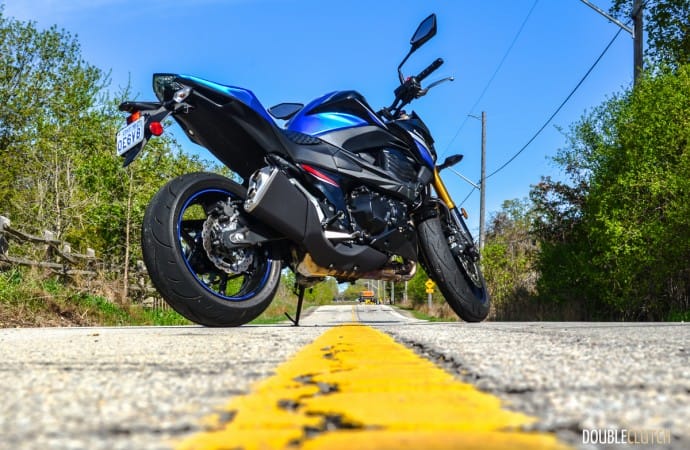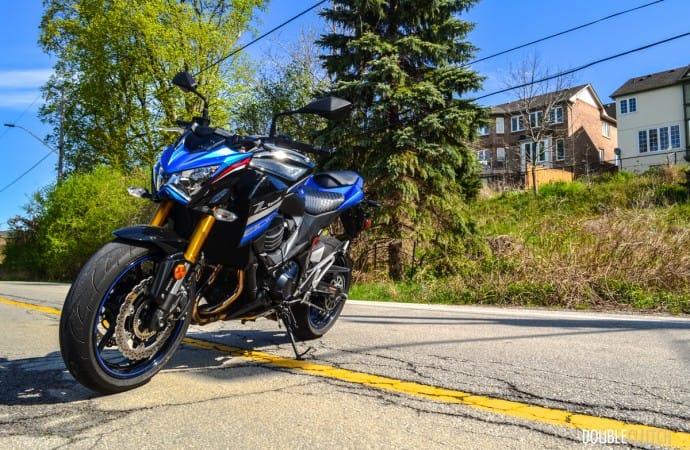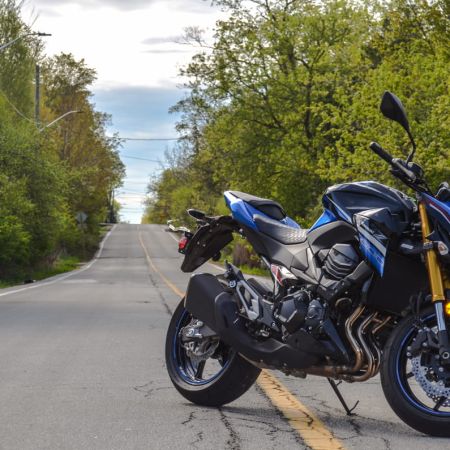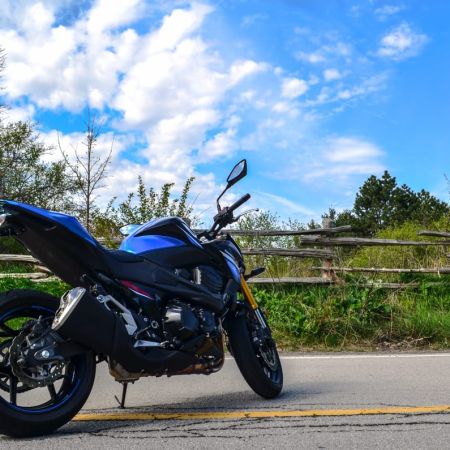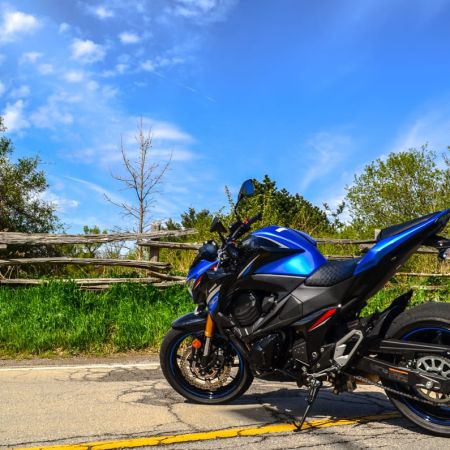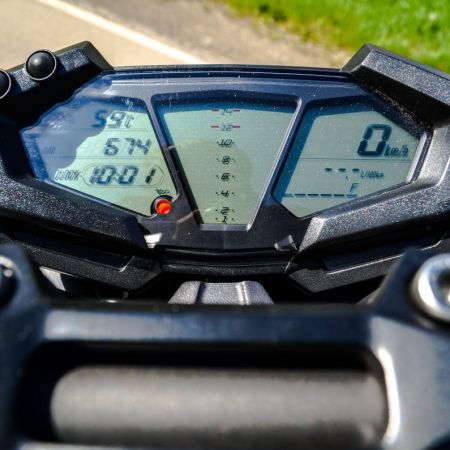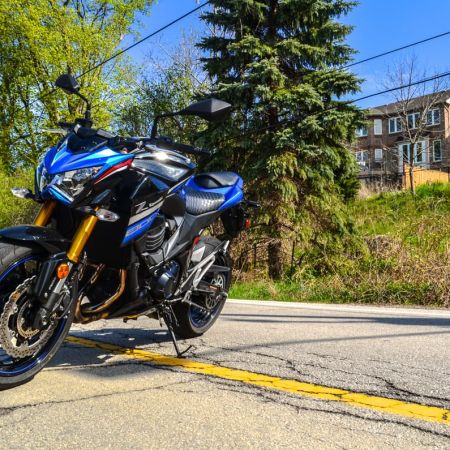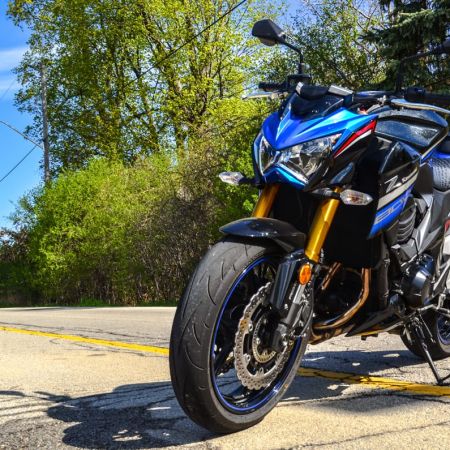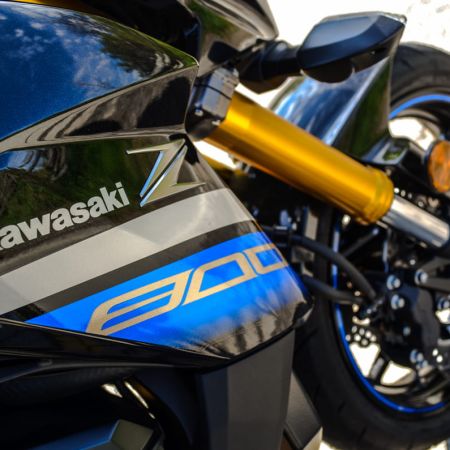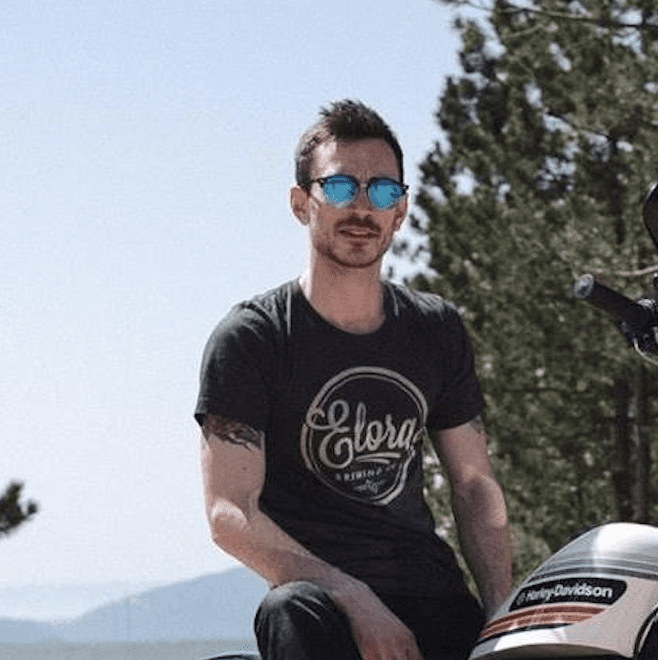Perhaps it’s a result of my recent Harley rides, but I’ve been spending a lot of time thinking about the role motorcycles play in the connection between a rider and the road. Riding a motorcycle is visceral. The immediacy of everything – the road, the trees whizzing past, the other vehicles around you – is so incredibly apparent. It’s undeniable that this immediacy comes with its own set of woes; threat of other vehicles, objects and imperfections in the road, etc. In comes the motorcycle. It exists to exacerbate these immediacies while tempering the threats. At what point does a bike stop removing distractions between that rider-road connection, and at what point does it become an additional distraction?
The 2016 Kawasaki Z800 has struck a balance in this aspect. It reinvigorated my riding experience with simplicity. For all you riders searching for advanced electronics to keep you in check, this bike may not be for you. The z800 comes with always-on ABS, but no other real electronics intervention systems. This may be a symptom of its affordability; at $8,399, it seriously undercuts the majority of the competition. The Street Triple R is $10,400 and the Monster 821 is $11,499.
Yamaha’s FZ-09 (reviewed here), serves as a strong threat with a price of $8,149. The torquey machine is loved by many, and seeing as how the naked category is growing with increasing popularity, the FZ-09 is selling fast. The Z800 could not have entered the North American market any later. Should Kawasaki have waited another year to bring this popular European model to North American soil, it would not have been able to ride this surge in popularity of naked bikes. It emerges now as a sincere threat to its competition.
Let us return to the aforementioned simplicity of the Z800. You get on it, turn the ignition, start it, and go. For some reason, it feels natural on the Z800. Not only that, but familiar. Riding the Z800 feels like sitting in your favourite spot on the couch (though not as comfortable); you immediately sink into it and assume whatever position you’re used to. You may not glance back at that couch once you leave it, but I sure as hell was glancing back at the Z800. It’s exactly what you want a naked bike to look like: beefy, aggressively styled, and raw.
That being said, it’s most definitely controversial. Some people simply hate the look of it. Personally, it grew on me. At first, I was turned off by the forward sloping headlight and its lines overall. Then I started to gain a deep love for the animalistic styling and the gap in the fairing, which made me feel like I was looking into its beating heart. The true heart of the bike is an inline-four, 806cc motor. Kawasaki opted to stay away from the now popular triple, sacrificing low-end torque for high-end boom.
They worked with the inline-four to boost low to mid-range power by adjusting header length, playing with equalizer connections, and including an internal exhaust valve. Still, there is a slight lull in power up to 6k rpm, where the bike begins to take off. Kawasaki has also dumped the idea of a throttle-by-wire system for a good-old steel cable, which feels exceptionally responsive and provides great feedback. The greatest highlight of this bike, though, is its suspension.
This is Kawasaki’s main point of competition with the Yamaha FZ-09. The triple under the FZ-09 is a more charming motor than the four-cylinder under the Z800, but the stock suspension rig on the Z800 blows the FZ-09’s out of the water. The Kawi is fitted with a KYB 41mm inverted fork at the front (adjustable damping and preload), and a horizontal monoshock in the rear (adjustable spring preload). Cracks and bumps in the road are no longer worrisome in the slightest, yet the suspension is beautifully firm and planted in corners as well.
Riding through the city is just as enjoyable as hitting twisties on this bike, and that is a difficult thing to accomplish. The Z800 is 509lbs, by no means lightweight for its class. That being said, it’s so incredibly well balanced that this is not discernable at all while riding. Wide handlebars and a low centre of gravity keep the bike nimble and manoeuvrable. High or low speed, I never found the weight to be an issue.
The bar design and instrument cluster of the bike are both simple as well, which some find plain, though I find it charming. The one feature that proved to be a slight annoyance was the fuel gage. There were times when the meter was empty and I felt as if I was going to run out of gas, when suddenly it would somehow produce another bar of gas; accuracy was the issue there. The only flaws of the Z800 seem to manifest themselves from the bike’s affordability, which is the most positive outcome. Cost cuts that were made seem to have been made in all the right places, leaving the bike as a fun machine that won’t cost you more than a slightly sore ass.


